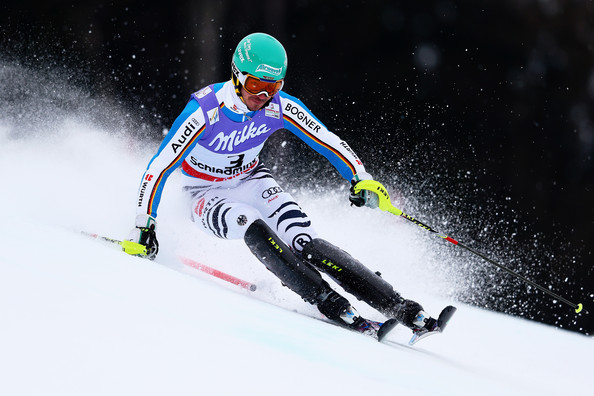I have the opposite question. I've asked this before, but not gotten a convincing answer. I was in a lesson that included a bit of video analysis. For a couple of us, the instructor saw, and called out, daylight under the inside ski at the apex of the turn. My question is, why is this a flaw?
The question I would ask mdf is: Why are you picking up your ski? In the expert context the the OP designates, the better the skier we become, the more that all our movements have purpose. Purposeful skiing is as much about movement reduction as it is about movement. If you do not know why a movement pattern exists in your skiing, the next thing to do is to “screen” it with purpose and asking the “why”. If you can’t find a reason, throw it overboard. Daylight under the ski is only a flaw under the expert context of using a two ski carving platform technique. Many experts still use picking the old outside/new inside ski up off the snow as a movement cue for their CoM to continue directly down the hill (OLF, ILE, LTE/phantom, etc.). In a freeskiing context, the eventual completion of refinement of this CoM management would no longer require the movement cue.
To become expert skiers we must learn to balance the entirety of the turn on the outside ski. A refined version of that is the ability to always keep about 20% weight with a touch of “hooking leverage” on the inside ski so that it bends and carves in “unison” with the weight dominant outside ski. For a skier who does not have good outside ski balance, trying to carve the inside ski with a modicum of pressure results in them falling too much to the inside. A good skier can play with that inside ski enough for meaningful contribution to the carving effort while consistently maintaining weight dominance to the outside ski. A two ski carving platform with weighted release, transfer and re-engagement that produces a “full set” of tracks and increases the body’s tactile relationship with the snow with a more “sophisticated” (more dynamic/less effort) carving platform that receives more feedback and provides more output than only one ski can provide. Though, it also provides a more complex set of forces to manage. It is 4x4 carving vs. 4x2 carving. This is why I believe the best carvers, racers, leave full sets of two very defined tracks that show no signs of skidding nor any disengagement with the snow (when freeskiing). The two tracks will look exactly the same except for a deeper, “darker” outside track that clearly shows the pressure differential. For skiers who ski from the feet AND utilize a tipping centric technique, “tipping for two” is the way to go. “Abrupt” weight shifts of 100% transfer turn into smoother and more “progressive” weight shifts that look more like this (exaggerated & generalized):
Progressive Weight Transfer:
Start of Left Turn Cycle:
Phase 1 - 60/40
Phase 1.5 - 70/30
Phase 2 - 80/20
Phase 2.5 - 70/30
Phase 3 - 60/40
Transition - 50/50 (fully weighted, no vertical)
Start of Right Turn Cycle:
Phase 1 - 40/60
Phase 1.5 - 30/70
Phase 2 - 20/80
Phase 2.5 - 30/70
Phase 3 - 40/60
Transition - 50/50 (fully weighted, no vertical)
The above is an example of inside/outside pressure control that, sequentially, is learned (for those who choose) after mastery of 100% outside ski balance (outlined below) and, likely, after one can balance a full turn on only the inside ski as well. Just like stance width, these values are not direct inputs but are instead outputs that are based on the culmination of a full set of refined fundamentals.
What the abrupt 100% transfer looks like (exaggerated & generalized):
Abrupt/full Weight Transfer:
Start of Left Turn Cycle:
Phase 1 - 100/0
Phase 2 - 100/0
Phase 3 - 100/0
Trans. - 0/0 (typically fully unweighted, using vertical motion)
Start of Right Turn Cycle:
Phase 1 - 0/100
Phase 2 - 0/100
Phase 3 - 0/100
Trans. - 0/0 (typically fully unweighted, using vertical motion)
There are many happenstance and tactical reasons for 100% weight shifts in chaos infused race courses, steeps, etc. For my technique, 100% weight shift is only a tactical move, not a technical one. Often a WC skier performs an “invisible” white pass turn that cannot be determined simply because the unweighted, or much less weighted outside ski is not off the ground. However, a trained eye can see the “CoM’s line shortcut” effects that an invisible white pass tun has on the CoM. Ultimately and ideally, in non-tactical freeski situations, we should never need to lift a ski off the ground unless there is a specific purpose as with all our movements. A movement cue is fine but should eventually not be needed to produce the cue’s desired results. All cues are developmental tools that “should” be temporary because they are not a function of the intuitive state we strive for in our skiing. Movement cues are they way we transition a cognitive focus through the semi-intuitive state and eventually, hopefully, to the intuitive state. If a movement cue remains in the intuitive state, it can be considered as unnecessary but, as long as it continues to do the trick, who cares? To many, lifting the new inside ski looks technically sophisticated even though it is not a “top tier” outcome.
